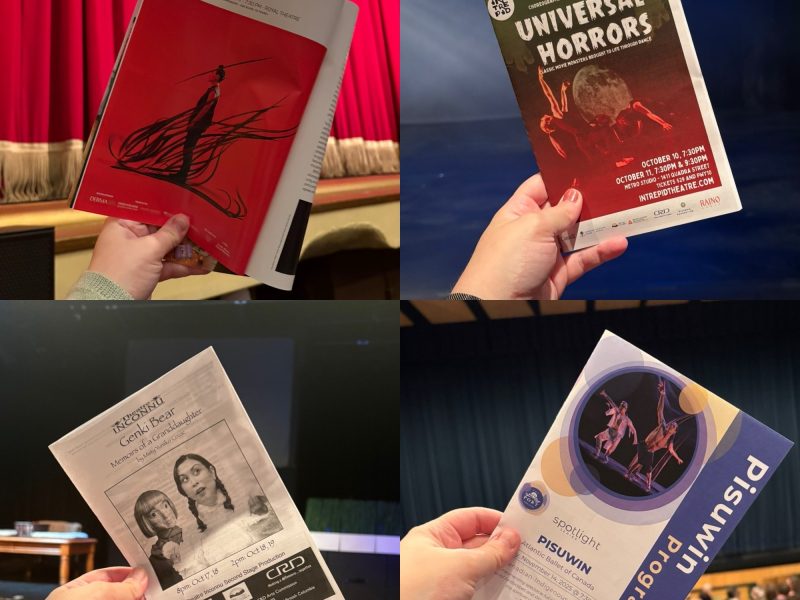
We begin in the thick of a dark night, a mad scientist at the precipice of his greatest discovery. Lightning crackles, and the creature flinches on the table.
Very rapidly, we move to a production that is anything but a bog standard gothic drama. I think it’s fair to say that if you’re hoping for Frankenstein that you have seen before, this likely isn’t the production for you.
I appreciate Destrooper’s directorial choices to include humour wherever possible, especially Peter-Nicholas Taylor’s assistant to the doctor. There is something incredibly intriguing about using a ballet to tell the story of a gothic horror. For the most part, it works incredibly well. But there are moments where seeing the beautiful, flowing dance numbers juxtaposed against the horror of the story that feels jarring.
There are two scenes that worked spectacularly: First, the scene where the creature finds himself in a dream world with his corpse bride was breathtaking. Tender and loving, and spread across the cosmos through large physical displays of falling in love. It was beautifully put together, and showcased the technical elements of the show, but also the incredible skill of the dancers.
The next is the final scene of act 1, where the creature stumbles and attempts to find his footing in this terrible new (to him) world and ultimately ends in tragedy. This scene includes an excellently choreographed fight, which I bring attention to as it is hard to make a regular fight scene in a show look unrehearsed (having been rehearsed so many times), but do make it almost look realistic while doing ballet moves is a truly impressive feat. The scene zips between horror and humour, fear and fury so seamlessly, it was breathless to watch the energy build to its terrible crescendo.
The addition of the Willis from the ballet Giselle (the details of which I am not familiar enough to speak on with any certainty), was a bold choice and it’s up to the audience to determine if that choice worked for them. This is a deviation from Shelley’s tale to an extent that I don’t know if she would recognize her work (especially in act 2), but this is an important discussion for audiences to have: to what extent is deviation from the source material to be lauded, and to what extent does the original text need to be preserved?
However, without the director’s notes, I am uncertain if I could have pieced together the story cohesively. Based on the small sample size of overhearing other patrons talking nearby, there did seem to be some general confusion. Since the publication of Frankenstein in 1818, there have been many versions in TV, movies, popular culture, theatre, and radio plays – to keep telling the same story can be an incredible foundational place for artists to flex their creative muscles in their retelling, so change and bold direction should be applauded.
Does it work in this performance?
As a show, it’s unique and exciting, and the Willis’ dance scene is delightful and demonstrates the dancer’s skills beautifully. It’s scored in an exciting, yet grounded way. The technical elements come together in a rich tapestry that sets the time and place without hesitation.
As a viewer, I felt that the show holistically worked incredibly well, but I did feel that the source material was sometimes lost in a show that was at times, too lovely, too beautiful, too precious for the source material.
Ultimately, it’s up to you – you certainly won’t see another version of Frankenstein like this anywhere else, and there is bravery in trying something this bold.
There’s still tickets left for tomorrow’s performance: will you take a chance on a new retelling and go along with where the story goes?
Disclaimer: I received free tickets to the show as a result of other volunteer work I do. No review was expected or requested.

